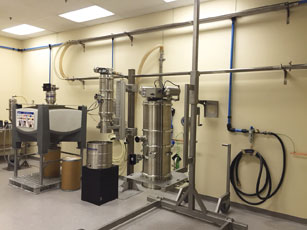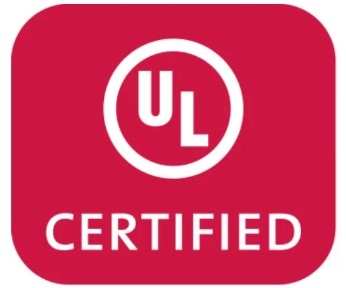
Know How to Select Vacuum Conveyor Tubing and Hose for Safe, Smooth Material Transfer
When learning about pneumatic vacuum conveying systems, it’s common to focus on the advantages of vacuum conveying versus positive pressure air conveying or on the ease and speed of using automated conveying systems versus manually loading heavy bags of powder and other bulk materials into a process. It’s also common to overlook the importance of whether to use metal tubing or polyurethane (PUR) hose – or both – for transfer but knowing how to specify the ideal type for each application is vital to achieving safe, smooth, continuous bulk material transfer.
Types of Vacuum Conveyor Tubing and Hose
In a vacuum conveying system, the powder, pellet, mixture, or other material is transferred from one point to another through enclosed hose or tubing. This protects the material from contamination due to exposure to the environment and protects workers from exposure to the material for a safe, dust-free workplace.
The metal tubing may use stainless steel, carbon steel, aluminum, or another metallic material based on the product or material being transferred. The rigid, metal pipe offers a smooth interior that promotes flowability, even when transferring cohesive powders. For transferring corrosive materials and/or for sanitary processing, stainless steel needs to be specified. In fact, every Volkmann vacuum conveyor comes in the FDA-compliant material suitable for food, beverage, petfood, pharmaceutical, and other sanitary processes.
When using a vacuum conveyor to transfer bulk materials over long distances, it’s important to keep the materials moving in straight lines as often as possible with few bends or elbows to maintain a consistent velocity of flow throughout the entire air conveyor system. Metal tubing excels for vacuum conveying over long, straight runs.
So, if metal tubing offers these key advantages, why is plastic tubing, hose or piping for vacuum conveying selected for such a wide range of powder transfer applications? Our engineers specify flexible polyurethane hose in conjunction with or instead of metal tubing when the material needs to be transferred relatively short distances such as for suction from a drum or bin at floor level up and in to the top port of a mixer, reactor, or vessel. As a flexible, bendable material, our polyurethane conveyor hose makes it easy to transfer the material around existing equipment or obstructions without needing an elbow or tight turn that could affect conveying power. It’s also easy to cut to length to neatly fit tight space requirements and these short lengths make disassembly for cleaning quick and easy. When it finally wears out over time, it’s easy to replace and easy to install.
We offer a wide range of polyurethane hose for vacuum conveying nearly any material. Food-grade, chemical resistant, anti-static, and other properties are available to match the material properties. And since the hose is often transparent, it’s easy to see exactly how and where the material is moving.
Using Tube and Hose for Vacuum Conveying
In many cases, our engineers specify both metal conveyor tubing and polyurethane conveyor hose in the same system. The suction wand used to pick up metal powders from a 3D printer, for example, may use a flexible polyurethane hose. This may connect to a long run of rigid, metal pipe that discharges the metallic powders into a storage hopper. Or, it may connect to a short section of tubing for transfer into the vacuum receiver.
Ultimately, the decision to specify one type of vacuum conveyor hose or tubing versus another involves the careful consideration of the material properties, desired throughput, physical space constraints, cleaning requirements, and other factors specific to each installation.
To try both types with your product, schedule a confidential test at our test laboratory here.

